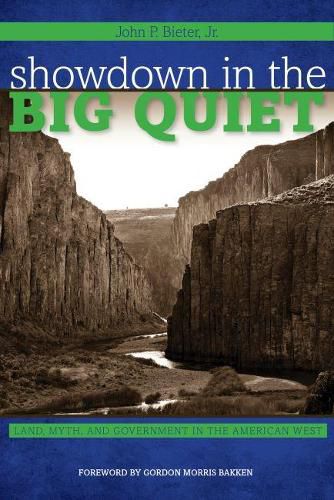Readings Newsletter
Become a Readings Member to make your shopping experience even easier.
Sign in or sign up for free!
You’re not far away from qualifying for FREE standard shipping within Australia
You’ve qualified for FREE standard shipping within Australia
The cart is loading…






Owyhee County, Idaho, also known as the Big Quiet, is the largest and least inhabited area in the lower forty-eight states. Who has decided how to use it? From violent mine wars in the mid-nineteenth century to environmental conservation disputes at the end of the twentieth, people in the West have battled over the role of government and notions of American identity to answer this question. Winners ultimately controlled the perception of their battles, often shaping the contours of the next conflict.
Similarly, historians debated interpretations of the West. In the early twentieth century, Frederick Jackson Turner argued that interactions on the frontier formed American characteristics of rugged individualism, democracy, aggression, and innovation. The New Western historians of the late 1970s attempted to debunk this theory, revealing the racial and ethnic diversity of the West, reminding us of the role of the environment, and documenting how settlers and later corporations conquered land wrested away from Native Americans.
While New Western historians shot holes in Turner’s thesis, the myths of the Old West prevailed. People craved the identity offered in western themed novels, films, and tourism more than historical facts. Showdown in the Big Quiet demonstrates how the Old West speaks to the New and proves how the power of western mythology moved from background to central character.
$9.00 standard shipping within Australia
FREE standard shipping within Australia for orders over $100.00
Express & International shipping calculated at checkout
Owyhee County, Idaho, also known as the Big Quiet, is the largest and least inhabited area in the lower forty-eight states. Who has decided how to use it? From violent mine wars in the mid-nineteenth century to environmental conservation disputes at the end of the twentieth, people in the West have battled over the role of government and notions of American identity to answer this question. Winners ultimately controlled the perception of their battles, often shaping the contours of the next conflict.
Similarly, historians debated interpretations of the West. In the early twentieth century, Frederick Jackson Turner argued that interactions on the frontier formed American characteristics of rugged individualism, democracy, aggression, and innovation. The New Western historians of the late 1970s attempted to debunk this theory, revealing the racial and ethnic diversity of the West, reminding us of the role of the environment, and documenting how settlers and later corporations conquered land wrested away from Native Americans.
While New Western historians shot holes in Turner’s thesis, the myths of the Old West prevailed. People craved the identity offered in western themed novels, films, and tourism more than historical facts. Showdown in the Big Quiet demonstrates how the Old West speaks to the New and proves how the power of western mythology moved from background to central character.